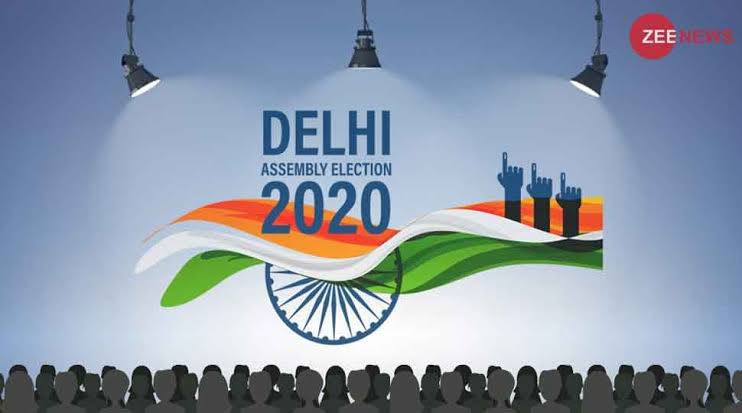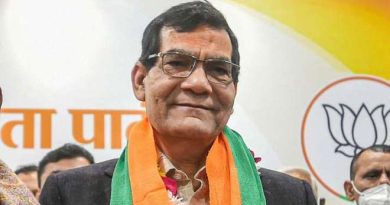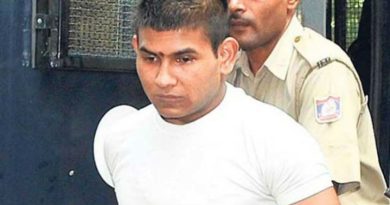Delhi Assembly Election 2020: 70 seats, 14.7 million voters, 1 verdict…
Nearly 14.5 million registered voters in Delhi will get to vote today to choose a new government for Delhi through the election of representatives to 70 assembly constituencies across the national capital. The voting will begin at 8 am and end at 6 pm.
Arvind Kejriwal’s Aam Aadmi Party (AAP) is seeking a second term while the Bharatiya Janata Party (BJP) is hoping to unseat him banking on Prime Minister Narendra Modi’s appeal.
Assembly versus Lok Sabha results
The contest for Delhi is likely to determine if the BJP victory in all seven seats of the state in the Lok Sabha polls in 2019 will hold in the assembly polls, which were swept in 2015 by Kejriwal’s AAP that won 67 of the 70 seats on offer. In 2019, BJP had registered leads in 65 of the 70 assembly constituencies. The two different results have prompted experts to claim people vote differently in the state and the national polls.
The war of campaigns
The elections will also in a way determine the efficacy of two very different campaigns in tone, tenor and substance. The AAP’s campaign was largely carved around its governance record in the last five years while the BJP appealed to voters through its nationalism pitch and projected AAP’s position on the Citizenship (Amendment) Act as a threat to national security, and its support to Shaheen Bagh and JNU protests as “anti-national”.
The leadership question and the polarisation attempt
The elections will also test if AAP’s attempt to carve out a multi-religious and multi-class alliance has been successful compared to the BJP’s bid to consolidate all Hindu voters across regions, castes and classes, and finally, it will also reflect if not projecting a CM candidate against Arvind Kejriwal and making the PM face of its campaign was a gambit worth playing for the BJP.
Whose message has more resonance?
Kejriwal told in an interview on Wednesday that the AAP government was “the first in 70 years” to seek votes “entirely” on the ground of work done on the development front. He also targeted the BJP for trying to colour the election with “Hindu vs Muslim” issue.
Delhi BJP chief Manoj Tiwari, too, said his party’s agenda was development, he told HT that “non-implementation” of Ayushman Bharat and PM Awas Yojana in Delhi will result in Kejriwal government’s defeat.
Different elections, different votes
AAP got 54% votes in 2015 polls but it dipped to 26% in the municipal elections in 2017 and 18% in the Lok Sabha polls in 2019, when it couldn’t even open its account.
Both the BJP and the Congress have improved their vote share in this period. The BJP polled 56% votes in the 2019 Lok Sabha elections, up from 36% in 2017 and 32% in 2015.
The Congress got just 10% of votes in 2015 but it increased to 21% in 2017 and 23% in 2019.
A Centre for the Study of Developing Societies (CSDS)-Lokniti poll conducted during the 2019 Lok Sabha polls showed that only about half of the people who voted for the BJP or the Congress in the Lok Sabha polls would have voted for the same party in case of a snap assembly election. The corresponding figure was 82% for the AAP.
The Impact of the campaign
The AAP used government advertisements before the model code of conduct, public interaction programmes, townhall meetings by Kejriwal, small corner meetings in neighbourhoods, dozens of rallies and roadshows, and a strong social media campaign to project its governance record, especially the transformation of government schools, public health systems, electricity and water supply at subsidized rates and free bus travel for women.
It has also promised to focus on pollution, provision of clean water and cleanliness in its next term if elected to power.
The BJP campaign initially started with claiming credit for providing ownership documents to four million residents of unauthorised colonies in Delhi through central legislation.
The party promised “triple-engine governance” with BJP at the centre, state and local level if elected to power.
But the BJP campaign took a turn in the wake of protests against the CAA, particularly in Delhi’s Shaheen Bagh area. Led by home minister Amit Shah, the party machinery and the Rashtriya Swayamsevak Sangh (RSS) cadre projected the protests as “anti-national” which suited Pakistan. It blamed the AAP and the Congress for backing these protests, spreading anarchy and violence, and causing inconvenience to the city’s residents.
The poll arithmetic
The AAP hopes that the ‘Muslim vote’ – influential on 10 seats–which had shifted to the Congress in LS polls will return to it as it may be best placed to defeat the BJP and it also hopes to win the support of the Hindu poor and the lower middle-class on the back of its welfare schemes. The party messaging made it clear that it was not against Hindu interests with Kejriwal reciting the Hanuman Chalisa, going to the Hanuman temple and candidates repeatedly emphasising their religious identity. Party has also promised lessons in patriotism in school curricula and supported moves such as the nullification of Article 370 that gave Jammu and Kashmir special status.
The BJP, for its part, is hoping to consolidate all Hindus including Punjabis, Banias, Purvanchalis and Dalits, irrespective of demographic differences. It hopes Muslim-driven protests against CAA would unite the majority community.
If the Congress is able to retain votes of Muslims and the poor even in some constituencies, it may benefit the BJP.
Modi versus Kejriwal
The PM addressed only two rallies but his image adorns BJP’s hoardings and advertisements. The party has announced no CM-face, that could have prevented a direct face-off between Modi and Kejriwal in poll campaigning. The AAP has tried to highlight that BJP has no CM candidate to counter Kejriwal.




